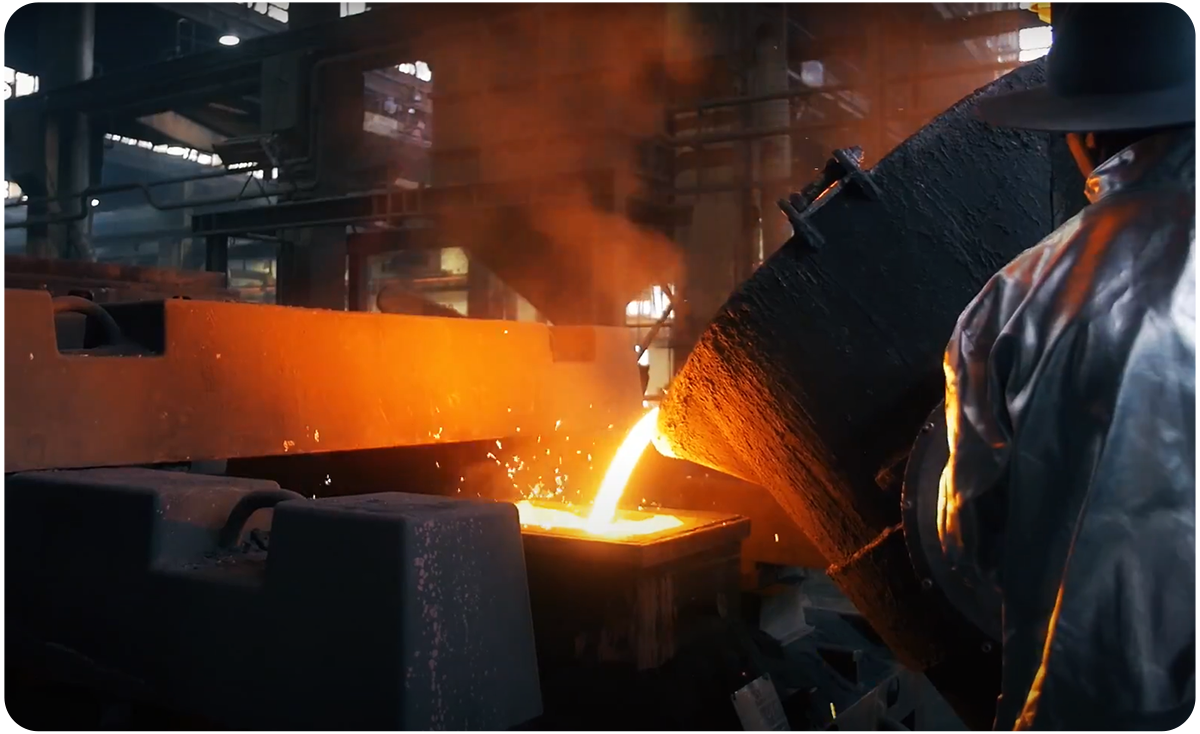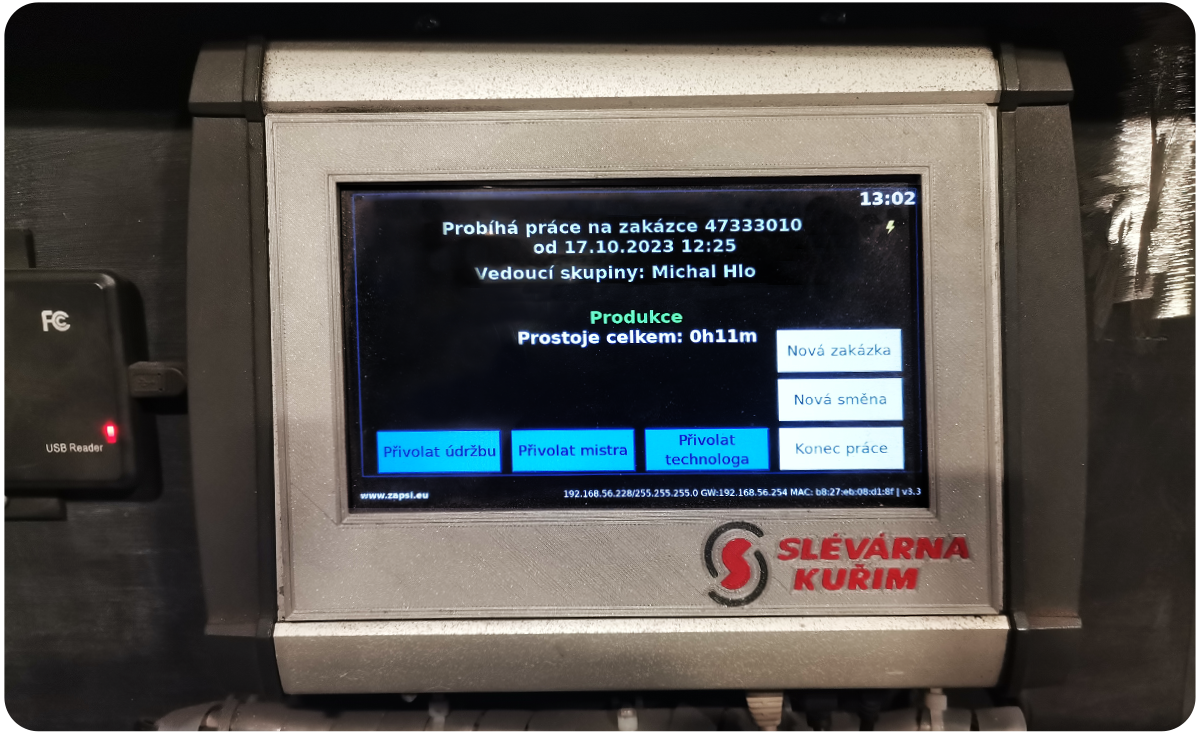"The implementation of Zapsi was our entry into Industry 4.0. We can monitor and evaluate the status of machines and process control across production - in real time.“
What does Slévárna Kuřim deal with:
- This 70-year-old foundry specialises in the production of grey and ductile iron castings for various industries.
- Other activities include the production of models from wood, cast epoxy and polyurethane resin as well as polystyrene and the machining of castings weighing from 60 kg.
Reason for acquiring the Zapsi System:
The main reason for the purchase of the Zapsi System was the efficient use of the machines and the monitoring of their use. The Zapsi system allows us to monitor the utilization of individual machines and identify the causes of their downtime - which can be caused by both organizational deficiencies and improper behavior of employees. Another key aspect was the control of energy consumption. With Zapsi, various signals from machines are integrated, giving us deeper insight into consumption and process parameters - making it easier to understand processes and support efficient production management.
Benefits of the Zapsi System:
- We use the Zapsi system as a central system to which our own systems can be connected, so that in addition to machine utilization, we can also store other parameters - from raw material consumption, energy, conveyor operation to extraction and more.
- Thanks to the readiness of the Zapsi System, we have learned to import data from other systems (Fanuc, Logo, Allen Bradley, S5, etc.).
- We are now thinking even more about the overall efficiency of production and trying to see what can be fed into the Zapsi System and from where - without having to worry about how and where to store and record this information
Which options of the Zapsi System are used most by the company:
- Most often we use an indicator in the form of a time graph, where we monitor information about the basic states of the machine "when it is running and when it is not running“.
- We are also interested in machine downtime - which machines are involved and how long they last.
- Digital data is also important to us - for example, quantities of the number of hangers or pieces.
How was the implementation of the contract:
First, we tested the Zapsi system on only one machine and monitored its operation. Thanks to this, we found shortcomings in the utilization of the machine, so we followed it up with other workstations. In retrospect, we have to admit that from an installation point of view, the biggest mistake was the installation of the recording devices together with the touch panels - because we irretrievably lost data from before and after the installation of the Zapsi System. Otherwise, there were no major problems during the installation. The only thing we lacked was reporting, but this was created by Zapsi in the meantime.
Idea of future use:
We are currently planning to feed more data into the Zapsi System and we are starting to connect the Zapsi System with the production plan, linking back to the IS and using the data, for example, to run production instructions, etc... The implementation of the Zapsi System was our entry into "Industry 4.0".




